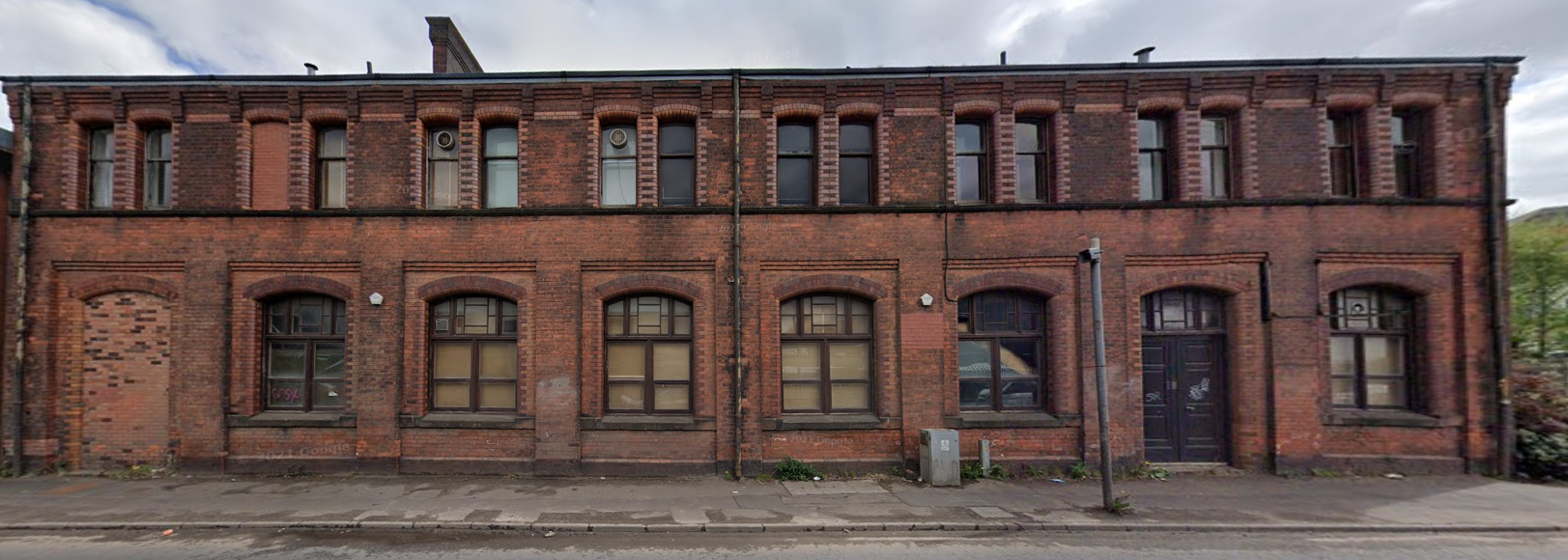Owners of historic Glasgow office building win appeal against decision to award listed status

124 Craighall Road (Google Street View)
The owners of a Glasgow building given category C listed status due to its architectural and historic qualities have successfully appealed to the Court of Session Inner House against a reporter’s decision to refuse an appeal against the decision to list it, and had the matter remitted to a new reporter.
About this development:
- Authority:Glasgow City
- Type:Residential
- Team:A10 Architects (architect), Weiss Development Co. Ltd (developer)
Weiss Development Company Ltd, which sought to demolish the City Sawmills in Port Dundas, Glasgow, and construct flats on its site, appealed under section 58 of the Planning (Listed Buildings and Conservation Areas) (Scotland) Act 1997. It argued that a previous decision by Historic Environment Scotland not to list the building in September 2022 had cleared it from listing, and no reason had been provided for a later change in position.
The appeal was heard by the Lord President, Lord Carloway, together with Lord Pentland and Lady Wise. Jonathan Weiss, a director of the appellants, appeared as a lay representative and N McLean, solicitor advocate, for the respondents.
Legitimate expectation
The building was purchased by the appellants in August 2013. In May 2022 the appellants applied for permission to demolish the building and erect 60 flats on its site. However, in the same month, an MSP applied to Historic Environment Scotland to have it designated as a listed building. HES carried out a full assessment of the architectural and historic interest of the building, but in September 2022 declined to designate it as a listed building due to the advanced stage of the demolition proposal.
In October 2022 Glasgow City Council issued a Building Preservation Notice and asked HES to reconsider. They duly did so and designated the Sawmills as a category C listed building, considering it to be a good surviving example of a late 19th Century commercial office building. On 11 October 2023, the reporter for the Scottish Ministers dismissed an appeal by the appellants against the decision and upheld HES’s designation.
It was submitted for the appellants that HES’s original decision constituted a certificate under section 5A of the 1997 Act clearing the building from potential listing, which meant that no BPN could be served on the property for a period of five years. This first decision therefore rendered the BPN issued by Glasgow City Council void, combined with the appellants’ legitimate expectation that HES, as a public authority, would honour its original decision.
Alternatively, it was argued that if the decision of September 2022 did not constitute a certificate, there was a legitimate expectation that HES would not list the building where there had been no change in the material circumstances of the case. Further, in reversing its original decision HES had acted contrary to the Scottish Regulators’ Strategic Code of Practice and in a manner which infringed the appellants’ rights under Article 1 Protocol 1 ECHR.
Seemingly remarkable reversal
Lord Pentland, delivering the opinion of the court, said of the first ground of appeal: “HES did not receive an application from any person for a certificate. They did receive an application requesting that the building should be listed under section 1 of the 1997 Act. They determined that application by their decision of 5 September 2022. There is no basis for holding that the decision not to list the building amounted to or constituted a certificate under section 5A.”
He continued: “The two types of decision – whether to list and whether to issue a certificate - are entirely distinct from one another. They arise under different statutory provisions. There is no read-across between them. The first ground of challenge to the reporter’s decision is misconceived and must be rejected.”
Addressing the appellant’s broader criticisms of the reporter’s decision, Lord Pentland said: “At the root of the appellants’ concerns was the seemingly remarkable reversal by HES of their original decision not to list the building in circumstances where nothing of any material relevance had altered in the short interval between the two decisions. While GCC had issued a BPN in the immediate aftermath of the first decision, the significance and effect of this are not explored by the reporter. In their second decision HES did not explain why the BPN made any difference to their approach.”
He added: “In these unusual circumstances the court considers that the reporter erred in law by failing to engage with a key aspect of the appellants’ concerns about the overall fairness of the procedure followed by HES. She ought to have addressed the issue of whether there was any legitimate basis for the decision by HES to change their view on listing so fundamentally and so soon after their first decision without there being any material change in the circumstances of the case.”
Lord Pentland concluded: “Whether it is correct to regard the first decision as one which created a legitimate expectation in a public law sense is not a question to which the court requires to give a definitive answer. The more important point is that the thrust of the appellants’ concerns was that they had been treated unfairly by HES. The reporter should have recognised that this was an important issue to which she had to give full consideration. She erred in law by failing to do so.”
The appeal was therefore allowed, with the court ordering that the matter be reconsidered by a different reporter in light of the views expressed in its judgment.
























